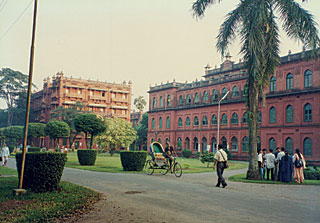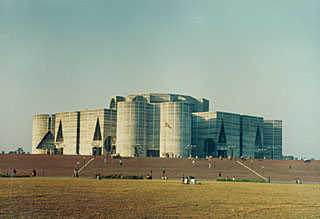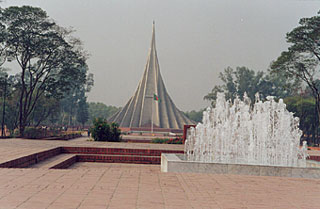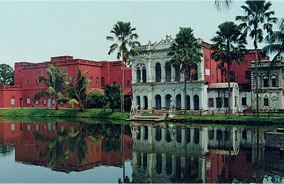|
|
| Dhaka |
|
Dhaka The capital of Bangladesh , has a fairly long history. It grew as an urban center in the Sultanate period and rose into prominence in the Mughal period when it enjoyed the position of a provincial capital. It was founded about 400 years ago by the side of the river Buriganga. Dhaka gained city status in 1947 when it was made the capital of East Pakistan . The importance of Dhaka increased exponentially after 1971, when it became the capital of independent Bangladesh . The area and population of Dhaka Metropolitan area were 1,600 sq. km and 9.0 million respectively (2001). As the capital of a free sovereign state, Dhaka assumed the status of being it most important center of political power, administrative functions and economic, social, educational and cultural activities. It is the place where virtually all decisions are made, being the headquarters of all government departments.
|
|
Tourist attractive places Dhaka used to be know as the city of mosques because of the preponderance of beautiful mosques built in the Indo-Islamic style since the Mughal days. The nineteenth century saw the construction of some magnificent buildings built in the Indo-British style. The Ahsan Manjil, the Mitford Hospital , the Rup Lal House , the Rose Garden and the Curzon Hall dominated the architectural scene of the city. |
 |
 |
The building of the Jatiya Sangsad Bhavan or the Parliament Building in Sher-e-Banglanagar, the second capital, designed by the American architect Louis Kahn. The design received an international award for architectural excellence and now the building is the prime architectural specimen of modern Dhaka .
|
|
|
The Lalbagh Fort built in 1678 A.D. by Prince Mohammad Azam son of Mughal Emperor Aurangzeb. The Fort has a three storied structure with slender minarets at the southern gate and a well laid out garden. Adjacent to the fort are the tomb of Pari Bibi, daughter of the Mughal Governor Shaista Khan. National Memorial , located at Savar, built to commemorate the martyrs of the war of independence in 1971. |
 |
|
| |
 |
|
Sonargaon , literally the Golden Village , is a historic site situated about 30 km to the south east of Dhaka . The famous traveler Ibn Batuta visited this place in about 1345 A.D. There are a number of old relics and architectural remains in the area, some of which had been built in the early fifteenth century A.D. Among them, the tomb of Sultan Gyasuddin Azam Shah (built in 1410) and Hazrat Shaikh Muhammad, the single-domed mosque at Mograpara (built 1486), the Goaldi mosque, the arched bridge at Panam, the tombs of five Pirs and Manah Shah, the Damdam fort are the most significant. The folk art Museum established by the government of Bangladesh . Sonargaon now has become one of the most attractive venue for a tourist to see various handicrafts, made of jute and bamboo, clay works and shops Jamdani saries and designed pottery.
|
|